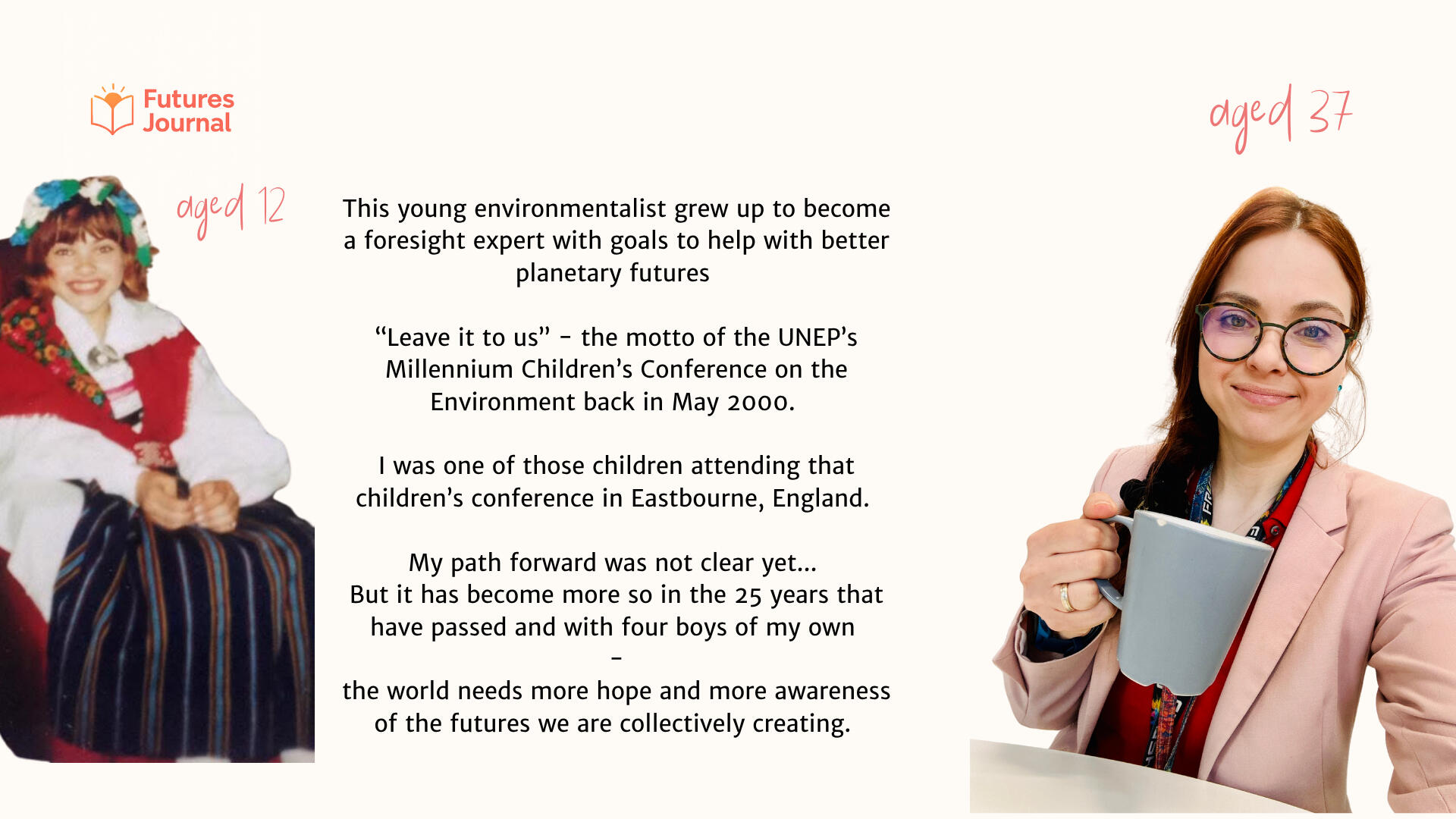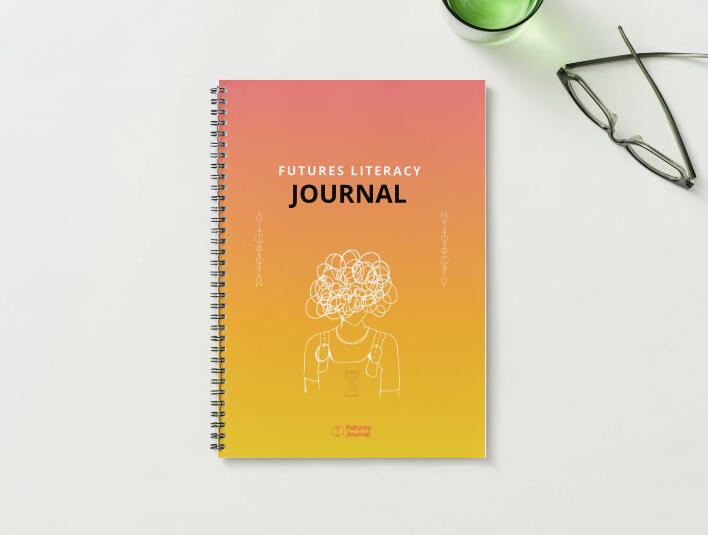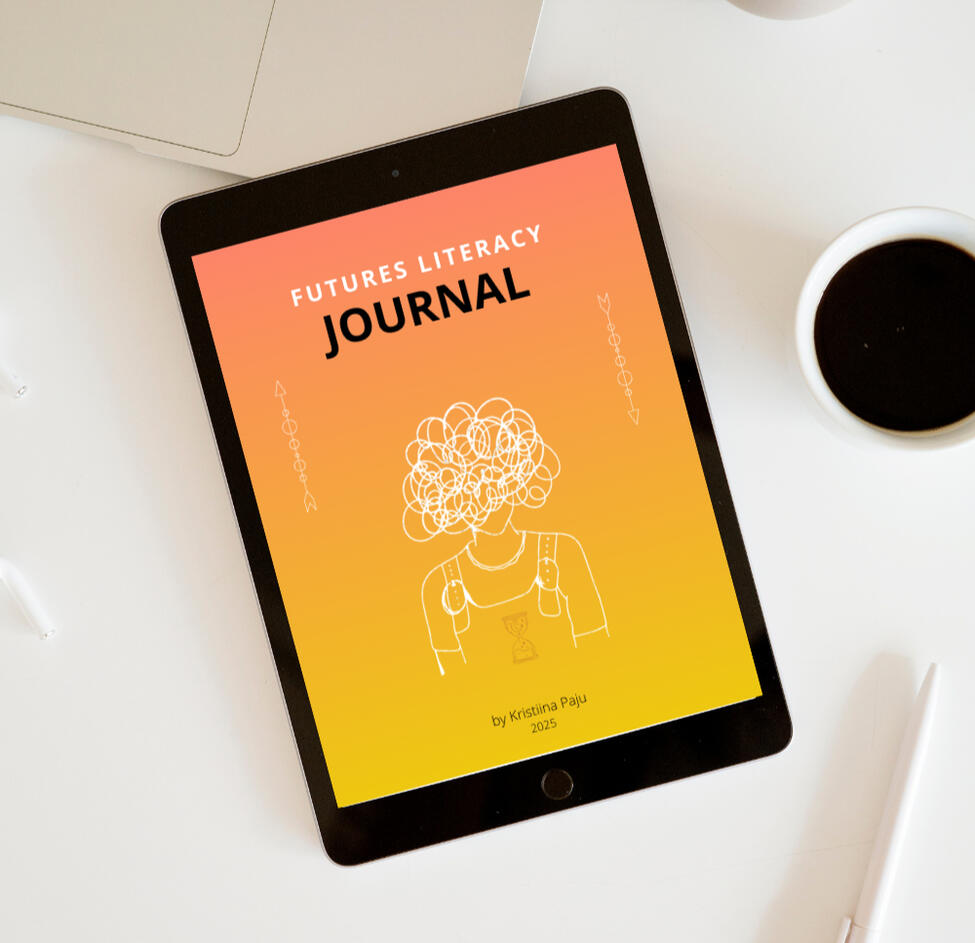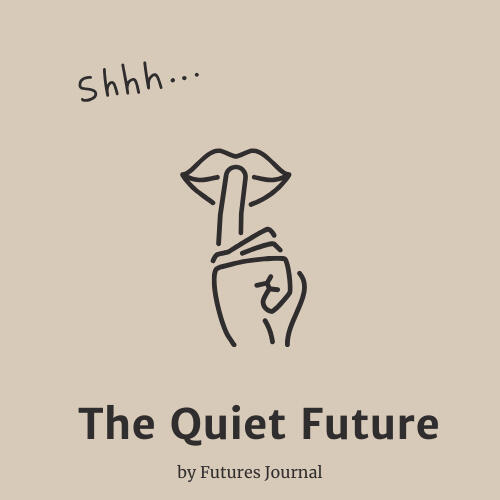Futures Literacy Journal
The Futures Literacy Journal helps you slow down, reflect deeply, and design a meaningful path forward:🌀 Reduce anxiety and overwhelm through mindful reflection🧭 Make values-aligned decisions with greater confidence🔮 Build personal foresight and resilience in a fast-changing world✍️ Use structured prompts to turn uncertainty into possibilityYou don’t need to be a futurist — just curious about what’s next.

This journal is for you if...
you support others through meaningful change
you love to discover new foresight tools
you love to explore ideas and reflect deeply
you align your purpose with future action
you are looking to combine mindfulness with foresight
Created by an academic futurist with a practical mindset.
By Kristiina Paju — futures researcher, educator & practitioner.
Be The Author of What's Next - The Future Begins With You
Welcome to the Futures Literacy Journal—a creative, reflective space where mindfulness meets imagination.In an ever-changing world, we often feel pulled between uncertainty and the desire for clarity. This journal helps you pause, reflect, and reimagine what’s possible. Rooted in the principles of futures literacy and mindfulness, it’s designed to guide you through thoughtful exercises that explore your present, challenge your assumptions, and empower you to envision futures aligned with your values.
About the Futures Literacy Journal

- Be present.
- Think ahead.
- Act with intention.Whether you're seeking clarity, change, or simply space to reflect, this journal invites you to slow down, tune in, and step into your role as a conscious co-creator of tomorrow.Your future doesn’t begin someday—it begins the moment you open these pages.
“Hi, I’m Kristiina. Futures literacy has changed how I think, act, and relate to the world. I made this journal so you could explore it too.”— Kristiina Paju, M.Soc.Sc. in Futures Studies (University of Turku, Turku School of Economics, Finland)
Explore the Journal
- Futures Journal on Facebook
- The Quiet Future Podcast on Facebook
- Academic resources by Kristiina on ResearchGate
LEAVE US A MESSAGE!
Get the Journal:
Three ways to begin. One futures literacy practice. Pick your path.
🎉 Promo Code: To celebrate the launch of the Futures Literacy Journal, you can use the code LAUNCH5 at checkout for 5€ off—a small thank you for being here at the beginning.We also believe that futures literacy should be accessible across all contexts.
If you live in a country where the standard price may be a barrier, you’re welcome to use a code that you will be getting after reaching out to [email protected] stating you would need 30% off the standard price - we trust our community to use this option with care and honesty.🌿 Futures thinking grows stronger when more voices are included.
How to use the Futures Literacy Journal?
Print it at home:
Use your own printer or a local print shop. Write by hand and make it personal.Use it digitally:
Open the PDF in apps like Goodnotes, Notability, or any PDF editor.No special tools are needed — just a quiet moment, some curiosity, and a place to reflect.Start at your own pace. Revisit whenever you need.
🎉 Thank you & welcome! 🎉
You’ve just taken a powerful step toward exploring your future with more clarity, imagination, and intention.Your Futures Literacy Journal (PDF Edition) is ready to download:

In case of any problems with download or if you need some guidance on how to put this journal into good use or if you would just like to leave a message, please send me an e-mail: [email protected]
Small action, shared impact
1% of your purchase supports Stripe Climate, funding cutting-edge carbon removal technologies.Because shaping the future means caring for the planet, too.
What’s next?
You’ll also receive this link in your email with 1 business day.
Set aside 10–15 minutes to explore the first few prompts.
Want to go deeper? Watch your inbox for bonus prompts and new resources.
If you have any questions or reflections, feel free to reply—I’d love to hear from you.
With care,
Kristiina
Creator of the Futures Literacy Journal
The Quiet Future Podcast

A podcast for those who imagine gently, question deeply, and shape what’s next with intention.🎧 Podcast Description:
The Quiet Future is a reflective audio space for anyone feeling overwhelmed by uncertainty yet drawn to explore what’s possible. Inspired by the Futures Literacy Journal, each episode offers a calm, thoughtful journey into how we imagine, relate to, and act upon the future.Through guided prompts, personal reflections, and occasional guest conversations, we’ll explore how to build futures literacy—not as a prediction tool, but as a practice of presence, imagination, and agency.Whether you're a creative, educator, changemaker, or simply future-curious, this podcast invites you to slow down, listen inward, and meet the future with openness.Your host is Kristiina Paju, Finnish-Estonian futurist with the aim of helping others make more aligned decisions for the future.Listen to the podcast where-ever you get yours!
Sign up for the 7-Day Future Mindset Challenge:

Feel more grounded. Imagine more freely.In just 10 minutes a day, this gentle journaling challenge helps you explore your relationship with the future—no foresight experience needed.
- Reflect on what feels possible (and what doesn’t).
- Notice your assumptions.
- Begin a simple weekly habit of futures thinking.
Let’s make space for the future—quietly, thoughtfully, together.🌟 How It Works:1) Sign Up
Enter your name and email address below. Don't forget to tick the "I accept" box! You will have to confirm your subscription to the mailing list by clicking the link in your e-mail!2) Welcome Email
Receive a warm welcome message from Kristiina introducing you to the challenge. (check your spam folder if you cannot locate the email!)3) Daily Prompts
Starting with "Day 1," you'll receive a daily email for 7 days, each containing a unique prompt to guide your reflection.4) Your Tools
All you need is a quiet space and a place to write—be it a physical notebook or a digital device.5) Transform Your Thinking
By the end of Day 7, you'll have taken meaningful steps toward enhancing your futures thinking.✨ Ready to Begin?
Embark on a journey of self-discovery and future-focused reflection.👉 SIGN UP NOW!
About
Kristiina Paju is a Finnish-Estonian futures thinker and educator with a background in education, business, and strategic foresight. Kristiina graduated with a Master of Social Sciences degree in Futures Studies from the University of Turku in 2021. She has been working on future skills, sustainability, and emerging technologies in vocational education since and is currently building a consulting practice focused on human-centered foresight and decision-making.From 2021 to 2024, she served as a judge for the Next Generation Foresight Practitioners Awards, supporting new voices in futures work.Kristiina has also been accepted as an advisor in the Lifeboat Foundation - among the safeguards of humanity on sustainability and care for generations to come. Learn more about her path in foresight here.The Futures Literacy Journal reflects her belief that anyone can shape the future — starting with the questions we dare to ask.
❓Frequently Asked Questions
What is the Futures Literacy Journal?
The Futures Literacy Journal is a self-guided reflection tool that helps you explore your relationship with the future through mindful prompts and gentle structure. It combines elements of journaling, futures thinking, and personal growth.Do I need any experience with foresight or futures studies?
Not at all. This journal is designed for anyone who is curious about their future—no academic or professional background needed.What do I get when I buy the journal?
With your purchase, you’ll receive a beautifully designed PDF (printable or digital use), plus access to guided prompts. Subscribers also get a Notion version and weekly email prompts. Then there will be a different package for organizations and teams - both the subscription and the organizational version will be launched a bit later!How does the 7-Day Future Mindset Challenge work?
After signing up, you'll receive one email per day for seven days, each containing a reflection prompt. It's a gentle introduction to the journal and helps you build a new habit.I didn’t get the confirmation email. What should I do?
Please check your spam or promotions folder. You must click the confirmation link in that email to start receiving the challenge. If you’re still having trouble, contact us.Can I cancel my subscription?
Yes, you can cancel at any time through your confirmation email or Stripe receipt. Your access to the weekly prompts will continue until the end of your billing cycle.Is this available in other languages?
Currently, the journal is available in English. A Finnish version is in the works—stay tuned!Do you offer discounts for customers from different economic backgrounds?
Yes. To make the Futures Literacy Journal more accessible globally, we offer a 30% discount for individuals living in countries where the standard price may not be affordable.If this applies to you, please reach out to [email protected]. We trust our community to use this option with care and honesty.If you’re unsure or wish to request additional support, feel free to contact Kristiina at [email protected].I still have questions. Who can I contact?
Please reach out to Kristiina at [email protected]. She’ll be happy to help!






